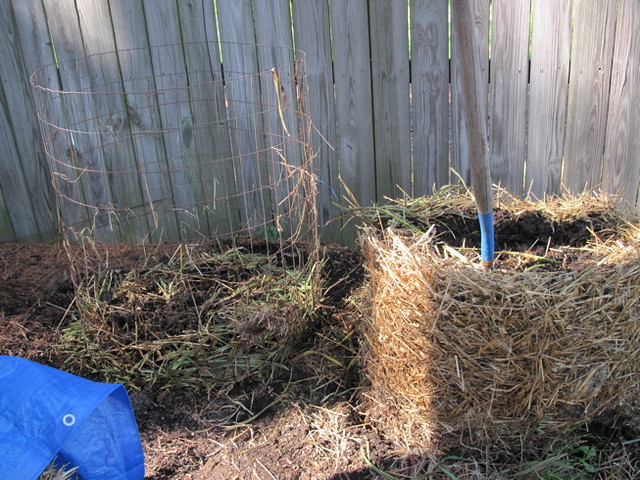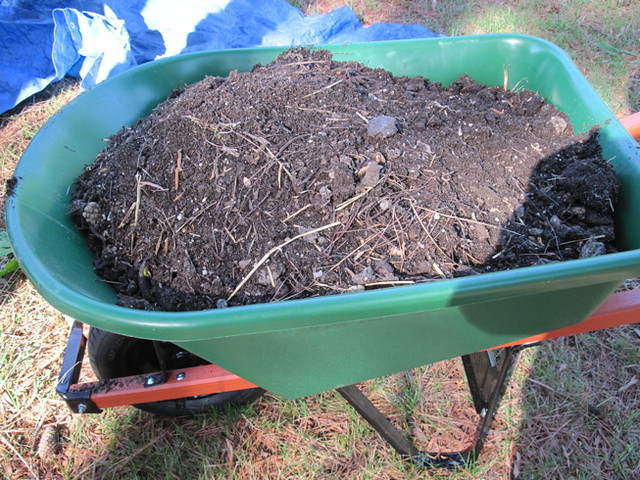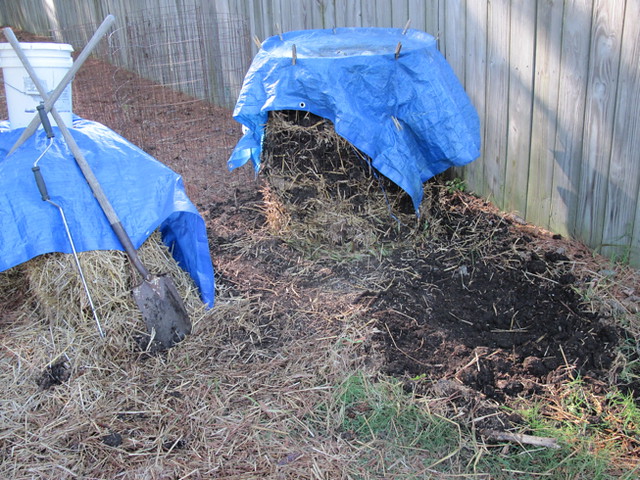I have used the aerobic method (frequent turning) with the compost I have made in the past. But I created an anaerobic pile over the last six months or so that didn't get turned a single time. A couple times I did use a corkscrew tool I have that bores down into the pile and opens air channels, but for the most part the pile just sat. Every 1-2 weeks I would bring a fresh five-gallon bucket of vegetable scraps from the kitchen and build a new layer on top of the existing pile: veggie scraps, with a bit of existing compost sprinkled on top to introduce bacteria into the fresh scraps, then sprinkled alfalfa meal on top of the dirt, then covered with a layer of straw and soaked with water. I've done that repeatedly over recent months just to see what would happen if I didn't turn the pile.
I had two round wire bins, each four feet tall.
The one on the left had about a foot of previously made compost which I removed into the wheelbarrow to use in my front veggie bed:
The bin on the right is where I've been "stacking" fresh ingredients a layer at a time the last six months. The straw all around the edges has not broken down because it didn't get incorporated into the pile as it normally does when the pile is turned regularly.
My mission today was to turn the anaerobic pile on the right into the now-empty bin on the left. I took the wire bin from around the pile on the right and this is what it looked like from the top. Three-plus feet of solid, dark compost surrounded by a doughnut of uncomposted straw around the edges. I was amazed. I could have dug that compost out of the middle of the pile and used it immediately. It was totally ready to use—no recognizable food scraps or straw anywhere in the middle section.
Instead, I turned everything—finished compost and straw from around the edge of the pile—into the new empty bin, sprinkling more alfalfa (nitrogen food source for bacteria) in as I went. Hopefully, the uncomposted straw will get broken down in short order and this whole bin will be ready to use later this spring:
My conclusion is that anaerobic composting works. It definitely takes longer, but it produces a nice product.









No comments:
Post a Comment